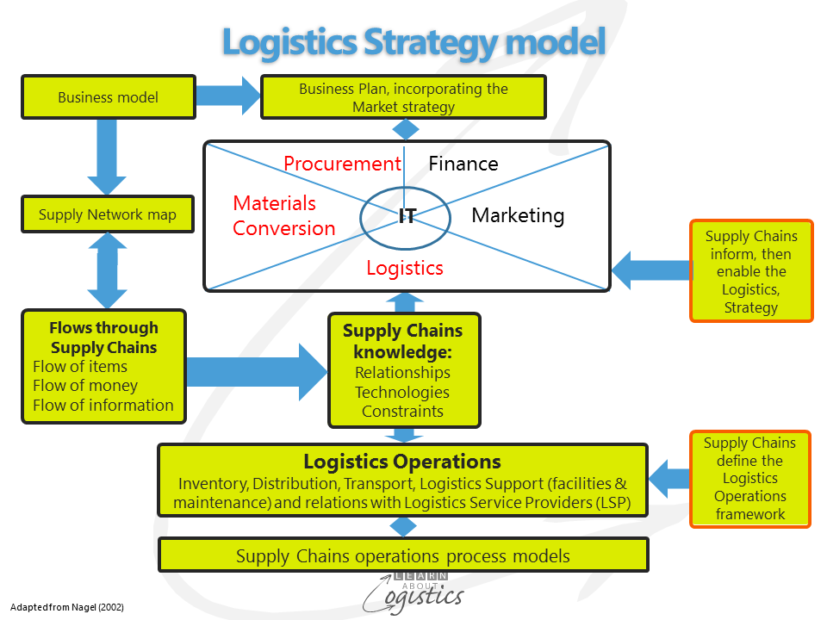Branding includes Supply Chains.
Texts concerned with marketing are likely to emphasise that a brand is a name and symbol that identifies a product or service of a seller. A brand differentiate the organisation or product from competitors and involves investment in packaging, advertising and promotion. But is this really the extent of branding?
The objective of a brand is to promote a seller’s intention to consistently deliver a specific set of features (or attributes) and benefits to buyers. But these can change with buyers perceptions and technologies. So the meaning of a brand over the longer term are the attributes of likely buyers of the product or service and the values those buyers may attach to it (e.g. performance, value for money, convenience).
Terms used to denote the value of a brand are brand awareness, brand preference and brand loyalty. These combine into brand equity – a figure that is difficult to quantify, but estimating ‘loyal customer lifetime value’ is one method to provide a measure of value, particularly in a merger and acquisition (M&A) situation.
But is it sufficient to align brands only with Marketing? Brand and reputation are built across the organisation, supported by the breadth of products offered across markets, common manufacturing processes and distribution channels. In addition are the supply chain capabilities of relationships with suppliers (including 3PLs and other LSPs) and customers (maybe including dealer or franchise networks). So, a brand is more than something that Marketing develops; it is a collection of symbols, experiences and associations connected with a product or service, which includes Supply Chain experiences and associations.
The topic of brands and supply chains is raised after reading about the recent acquisition of Sharp by Foxconn, the largest company in the Electronic Manufacturing Services (EMS) sector. As rising wages and improved working conditions in developing countries can make it less profitable for EMS businesses, they are likely to acquire companies in different sectors of the electronics market. In the case of Sharp, the company has advanced technology for the manufacture of a new type of screen for mobile phones, tablets and laptops, allowing Foxconn to negotiate higher margins from customers. There is also a brand name that continues to have consumer recognition, which could be revived.
However, Foxconn priorities have been on cost reduction, as their main business is assembling products sold under customer’s brand names. It has not had a need to spend time and money on promoting their business outside current and prospective customers. For any product organisation that wants its brand to be recognised or a company new to managing brands (such as Foxconn), should brand development be an exclusive journey for Marketing, or is there another player – the organisation’s Supply Chains?

Strategies to develop brands
The diagram shows the three core supply chain functions; each having their strategy. These strategies are amalgamated to form the Supply Chains strategy:
- The Procurement strategy addresses all factors surrounding commercial relationships with suppliers
- The Materials Conversion strategy addresses the operational and technical role of adding value to the purchased materials, whether in–house, at contract producers or test and pack facilities within 3PL warehouses
- The Logistics strategy focuses on the objective to provide availability of items (and associated services) through the core inbound and outbound supply chains
The Marketing strategy will incorporate the traditional 4Ps of the marketing mix – product, place (channels of distribution), promotion and price. However, with the importance of Supply Chains to an organisation’s success, the Marketing strategy and Supply Chain strategy should be brought together in the Market strategy. The Business Plan positions your organisation to take advantage of future opportunities from two views. One is to develop and protect your organisation’s resources (the core competencies); the second is the Market strategy.
The Market strategy enables ‘part to whole’ integration between a function and the overall market strategy; for example, the advertising plan within the Marketing strategy and the distribution plan within the Logistics strategy must both be consistent. This approach brings together the context in which managers operate and therefore are able to respond more rationally to competitive and economic pressures. If considered critical to your organisation, the Market strategy could also incorporate R&D, HR and other functions , to ensure they have a market focus.
The link between the Marketing strategy and Logistics strategy is the customer service requirements. These are the appropriate level of service for customers, by customer type, product group or market segment, taking account of order fulfilment capability, customer service resources and information availability. The customer service policy will also inform the nodes and links of your supply network.
The strategy documents should have an appropriate horizon (NOT the financial year) and not be so specific that staff are limited in identifying approaches that may increase brand equity. This more integrated approach to strategy should allow management to make informed choices concerning the ‘best’ portfolio of regions, countries and products.

